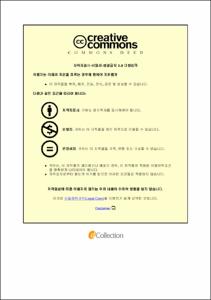부산 북항의 선박 통항에 따른 항주파 발생 특성에 관한 연구
- Alternative Title
- A Study on Characteristics of Ship Wave according to Vessel Passage in Busan North Port
- Abstract
- Busan North Port is changing from traditional container ships and cargo ships to a waterfront space where the demand for large cruise ships and leisure ships newly granted due to the redevelopment of the North Port is expected to increase. For this reason, there is a lack of research examining the risk cases for port frequency that may occur due to an increase in the amount of vessel traffic. In addition, as cargo ships enter and exit ports more frequently than in the past, and as the size and weight of cargo ships increase, it is also necessary to prepare for the risk of occurrence of frequency waves in the long-term increase in the amount of vessel traffic in the port. Therefore, in this study, traffic-related statistical analysis was performed based on actual information such as ship specifications, number of arrivals, and mooring locations in Busan Port from 2017 to 2021. In particular, in order to prevent marine accidents and the marina facilities to be developed in the redevelopment of the North Port, the possibility of occurrence of wave heights and cycles occurring when a large cruise ship enters a port was analyzed based on the port design criteria. The purpose is to make it usable as basic data for design.
As a result, the maximum port frequency that can occur in the inner and outer ports of the north port was analyzed. For this purpose, large and representative ships berthing at Jaseongdae Pier, Sinseondae Pier, Gamman Pier, and Cheonghak Quay were selected and the maximum port height was calculated. appear.
In addition, as a result of analyzing the wave height and cycle occurrence centering on a large cruise ship that can directly affect the North Port redevelopment area and a patrol boat belonging to Busan Customs (Busan331) with a maximum vessel speed of 35 knots, in the case of a large cruise ship at a speed of 8 knots or less, When the distance from the center of the hang frequency was 10 m, the maximum wave height was 0.20 m, but in Busan 331, the maximum wave height was 1.12 m at the same distance. In other words, when a government vessel operates at a maximum of 35 knots, the wave height is up to 6 times higher than that of a large cruise ship at 8 knots. In addition, when the maximum ship speed of the tugboat (DU T2) is 10 knots, it has a relatively strong thrust, so the maximum cruising wave height was calculated as 1.10m. Therefore, it is judged that the cause of various problems such as the passage of small ships in the trading port, the static temperature of the marina facilities, and the overpass of the hydrophilic space in the redevelopment area of the North Port are the speed and thrust of the government ships and tugs.
- Issued Date
- 2022
- Awarded Date
- 2022. 8
- Type
- Dissertation
- Publisher
- 부경대학교
- Alternative Author(s)
- Jong Min Lee
- Affiliation
- 부경대학교 대학원
- Department
- 대학원 해양산업공학협동과정
- Advisor
- 윤한삼
- Table Of Contents
- 제1장 서 론 1
1.1 연구 배경 1
1.2 연구 목적 3
제2장 부산항 해양환경특성과 북항 재개발 4
2.1 부산항 해양물리환경 4
2.2 부산 북항 재개발 현황 13
2.3 친수공간 마리나 시설과 당면과제 15
제3장 항내 항주파 발생의 이론적 고찰 17
3.1 항주파 개념 및 발생 특성 17
3.2 항주파고 산출 방식의 이론식 검토 19
3.3 항내 소형선박 피해 사례 27
제4장 부산 북항 내 항주파 발생 특성 고찰 29
4.1 부산 북항내 선박 통항 현황 분석 29
4.2 접안 위치별 대표선박 항주파고 발생 특성 분석 39
4.3 경비선, 크루즈선에 대한 항주파 발생 특성 46
제5장 요약 및 결론 51
부 록 53
참고 문헌 58
- Degree
- Master
- Appears in Collections:
- 대학원 > 해양산업공학협동과정
- Files in This Item:
-
-
Download
 부산 북항의 선박 통항에 따른 항주파 발생 특성에 관한 연구.pdf
기타 데이터 / 7.71 MB / Adobe PDF
부산 북항의 선박 통항에 따른 항주파 발생 특성에 관한 연구.pdf
기타 데이터 / 7.71 MB / Adobe PDF
-
Items in Repository are protected by copyright, with all rights reserved, unless otherwise indicated.